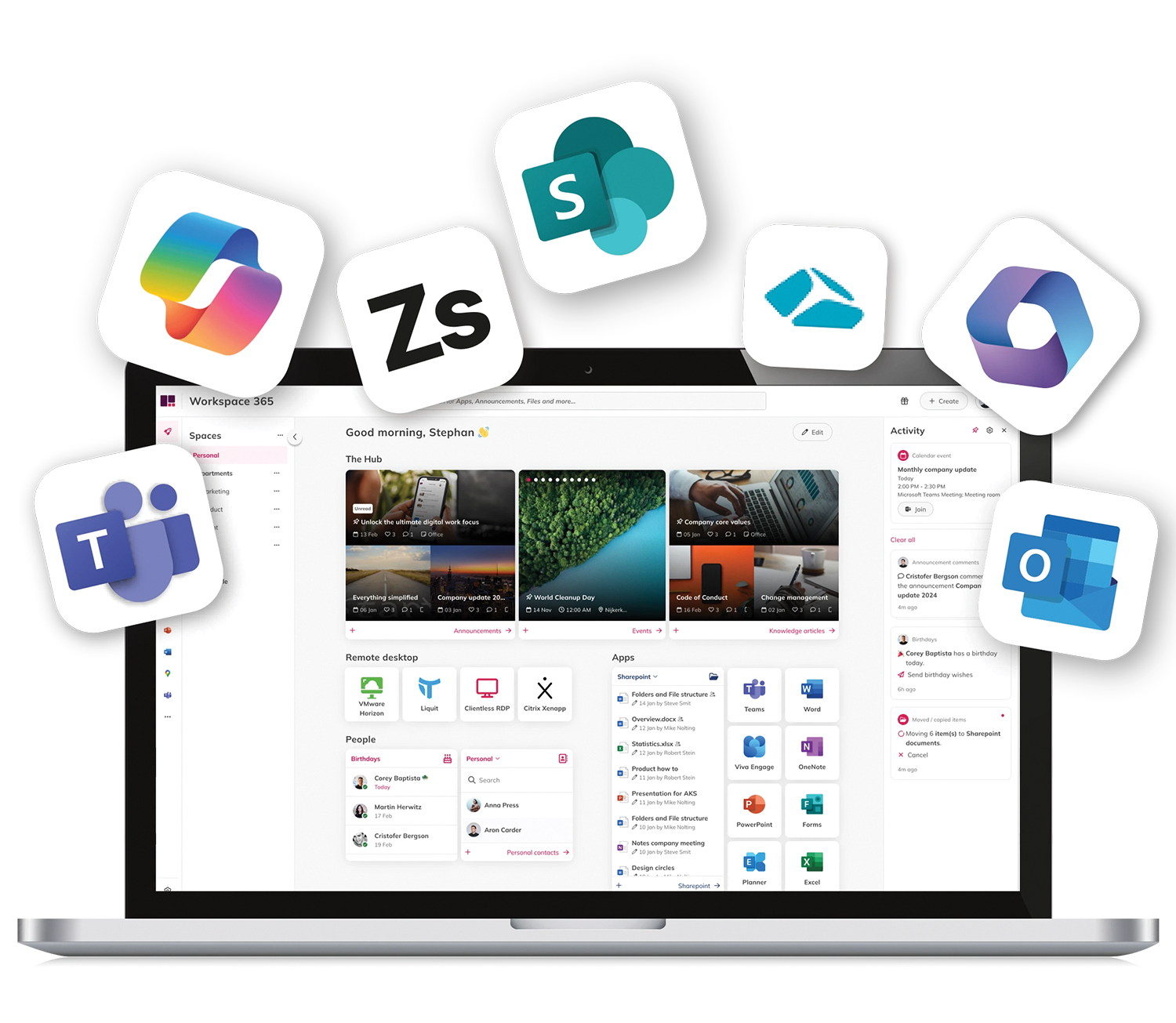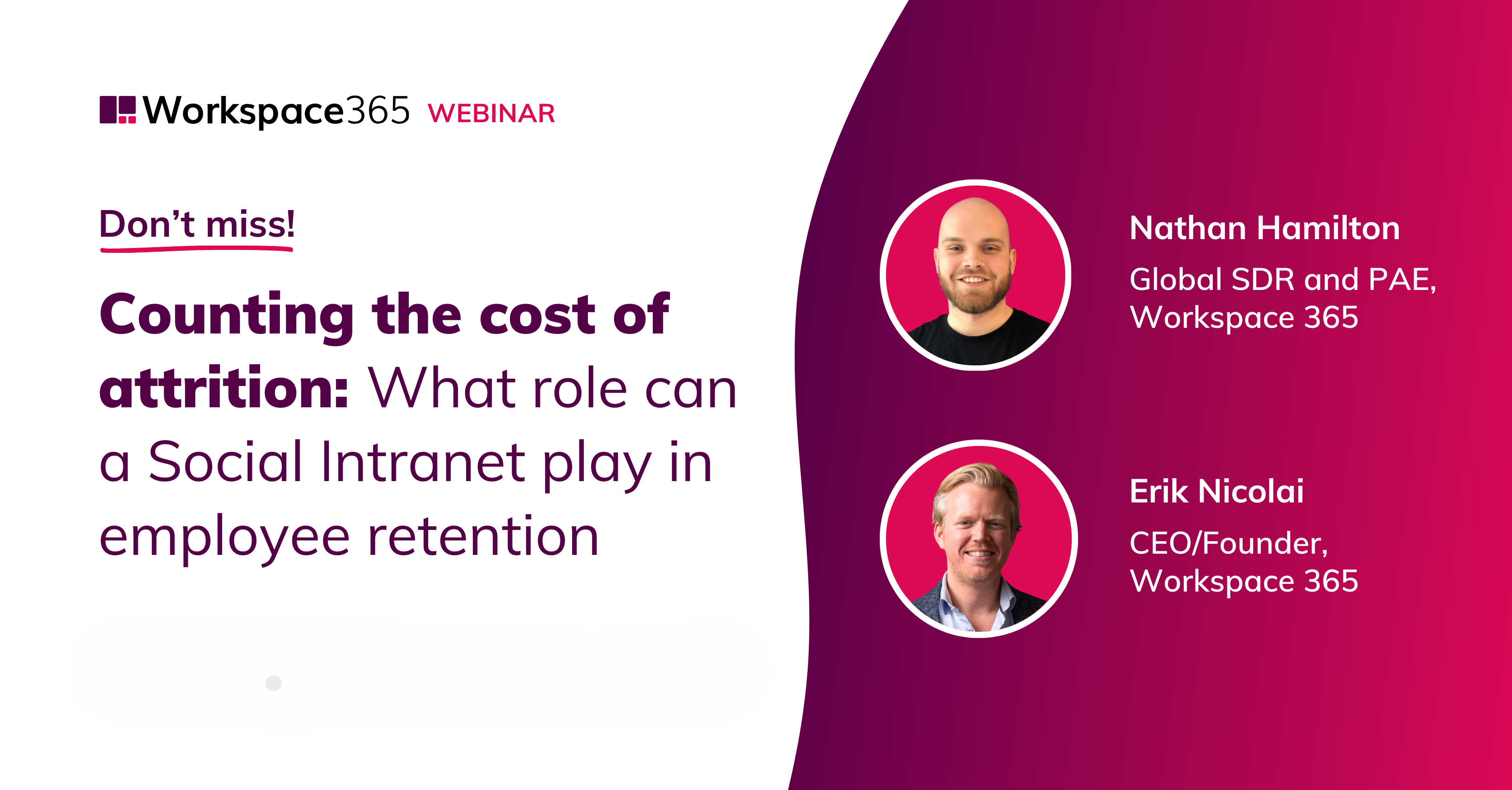Digital employee experience is a crucial tool for organisations to retain top employees and attract new talent. Where HR and IT traditionally work as islands, they now have to work closely together to create a digital employee experience that seamlessly matches the wishes of employees, now and in the future. A modern digital workspace can – or better still, should – play a pivotal role.
DEX: much more than a buzzword
Digital employee experience (DEX) is not just another buzzword. On the contrary, more and more organisations recognise that it is an adequate solution to a problem that is becoming increasingly urgent.
There have never been so many vacancies per 100 jobseekers. Factors such as the so-called ‘Great Resignation’, or massive wave of voluntary redundancies hitting companies worldwide since the beginning of 2021, are causing a lot of employee turnover. Younger generations like millennials and Generation Zs are changing jobs relatively quickly. In addition, the labour market is becoming increasingly global and volatile.
In other words, HR faces quite a job to retain good people and recruit new talent.
DEX as a solution to acute staff shortages
Automation and robotisation, asking employees to work longer hours, bringing in staff from abroad: companies are really grasping at anything and everything to cope with staff shortages.
One of the most adequate – and perhaps most overlooked – solutions is to create an ultimate DEX. By DEX, we mean all the experiences employees have with technology in general and the digital workspace in particular. Which tools are they using and how? Are they learning to deal with them? And which technologies do they feel are missing? These are all questions that need to be answered to create an effective DEX strategy.
Technology as weapon against the War on Talent
So why is this DEX so important? The simple answer: technology can be hugely helpful, but also incredibly frustrating if it does not match what employees want. Unnecessary complexity around applications and devices produces frustration, stress and unproductivity. For example, employees lose time unnecessarily entering passwords, duplicating data in different systems or searching for logins, applications or data.
It is therefore not surprising that many job applicants consider the DEX when considering whether they want to work for a particular organisation. Before signing a contract, they carefully examine the technologies (and their flexibility), applications and devices they will be working with in their new position.
To illustrate the importance of DEX, a large-scale global survey by Ivanti found, for example, that 18 per cent of Dutch people are considering resigning because they do not have adequate technology at work, and 48 per cent would have been more productive if they had better technology.
A good DEX strategy aims to eliminate as many such annoyances as possible while increasing productivity and job satisfaction by, for example, implementing new tools or functionalities or facilitating education on how to use the technology.
HR provides the input, IT realises the optimal experience
With DEX, it’s all about the employees, they should be central. That is where the HR department comes in, since it’s also responsible for the overall employee experience. HR has to ensure an optimal employee journey, which starts with onboarding. The digital aspect of employee experience continues to grow in importance every year and is fortunately becoming a priority for more and more HR leaders.
The bits and bytes are of course IT’s field of expertise, but nobody knows HR processes and the needs and requirements of employees better than HR itself. Traditionally, HR and IT are not used to working together, but when it comes to DEX, they have to be.
This produces synergy. From the people side, HR knows how to please employees. And with the support and input from HR (as well as from communication, as we will explain shortly), IT can design and optimise the IT landscape to maximise adoption vis-à-vis technologies. What are the consequences? Employees can work as easily as possible and the organisation performs as well as possible.
It is in fact also a very logical collaboration. After all, IT deploys digital infrastructure as an asset to keep the organisation running, HR does the same but with people as assets.
HR, communications and IT as DEX dream team
When DEX becomes an organisational focal point, HR, communication and IT can form a dream team. HR thereby acts as a feeler among current and future employees. When hiring new people, HR can inquire about their technology wishes and requirements. For existing employees, periodic surveys are a proven method to keep a finger on the pulse.
Communications is also an important stakeholder, traditionally being mostly in charge of the intranet. The intranet is often fully or partially integrated into the modern workspace. Besides the intranet, other social and collaboration tools also contribute to effective and adequate internal and external communication. It is therefore good to closely involve the communication department in optimising the DEX, as it simply has the most expertise in this area.
New insights from HR and communications should be submitted to IT as quickly and clearly as possible. Finally, it is of course of great value when the various team leaders keep the HR, communication and IT departments informed of any requirements and changes.
It is then up to IT to distil requirements from this and see how best to realise them within the current infrastructure. Want a next-level digital employee experience? Then form a DEX task force. Such a task force (which meets on a regular basis) should include people from HR, communication and IT, but also team leaders and end users from other departments.
Adaptive is the key to adoption
If you cram all applications, communication and information into one working environment it becomes far too much and employees will become irritated sooner rather than later. So the workspace has to be easy to adapt to specific groups and individuals and automatically adjust itself to simplify working. Result: everyone only sees the applications, tasks and information relevant to them.
How the synergy between HR, communication and IT pays off
So, HR and communications take the lead and IT gets facilitates. That’s basically the winning DEX formula. When the digital employee experience is improved in this way, it leads to benefits including the following:
Onboarding that answers more questions than it raises
Only 17 per cent of employees state that new colleagues are equipped with the right tools and technologies on their first day of work. For example, within a digital workspace, automated onboarding is possible through the provision of how-to videos, information and protocols. When (parts of) the intranet are available through the workspace, this can greatly improve the onboarding experience. And that experience is extremely important: poor onboarding demonstrably leads to higher staff turnover.
Creating valuable connections and engaging employees
A digital workspace has functionalities such as a staff search function, (parts of) an integrated intranet, fast instant messaging and offering personalised or general information. As a result, colleagues can easily connect with each other digitally to discuss, for instance, awkward situations, set out great cases or make valuable personal connections with each other.
Within digital workspaces such as Workspace 365 it is quite easy to get employees more involved in the organisation. For instance, by integrating a birthday tile, news feeds from SharePoint and certain Teams functionalities into the digital workspace. But also by allowing people to contact colleagues and other contacts via the address book at lightning speed.
Both creating valuable connections and engaging employees in the organisation has an important side effect: employees signal the power of technology in this and thus start to appreciate it better.
Encouraging cooperation
HR can be leading in initiating a digital workspace optimised for collaboration. Such a workspace, for instance, unites applications for communication and collaboration with (parts of) the intranet and a document management system. Because employees have access to all applications, information, processes and tasks via a single click, they feel in control of their digital working environment. And that is conducive to the DEX.
Next-level DEX with Workspace 365
Working with Workspace 365 means that everything you need for a productive working day is available within one click via Single Sign-On. Within a single environment, you can access applications, information, document management systems, news, intranet and more. It is even possible to integrate legacy software, such as Remote Desktop and fileserver and offer them in a uniform way.
Which also makes technological life in the workspace easier: employees can easily handle tasks via Micro Apps without leaving the workspace, and the Activity feed allows notifications to be integrated within the workspace (and tasks to be performed from there).
Therefore, with Workspace 365, people have a single starting point for all their digital work, from which they can access everything they need in the same, simple way. This saves them a lot of technostress and gives them not only a productive, but above all a very enjoyable working day.







